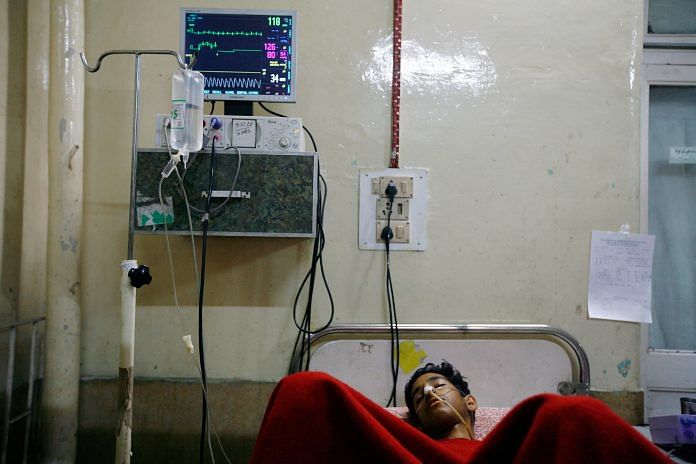At least six people have died of monkey fever or Kyasanur Forest Disease in Karnataka since December, with another 15 testing positive for it.
Bengaluru: At least six people have died in Karnataka’s Shivamogga district due to the Kyasanur Forest Disease (KFD), also known as ‘monkey fever’, since December, with at least 15 others testing positive for the often-fatal viral infection.
Health officials are working overtime to combat the spread of the virus, carrying out a vaccination drive, distributing insecticides and urging citizens to stay away from dead monkeys.
The disease is caused by the Kyasanur Forest Disease (KFD) virus, a member of the Flaviviridae family. Other members of the family include viruses that cause the yellow fever and dengue.
The KFD virus was first identified in the Kyasanur forest of the Shivamogga district (then known as Shimoga) in March 1957. The outbreak saw several primates dying, thus leading the disease to be called ‘monkey fever’.
The Karnataka heath minister has blamed the current outbreak on a lapse by the local health department, which reportedly didn’t follow protocol in dealing with the disease. According to a report in The News Minute, protocol dictates that health officials launch a vaccination drive within a 10-km radius of a suspected KFD case.
The government has constituted an expert committee, with officials from the state forest, health, rural development and veterinary departments, to conduct an inquiry into the suspected lapse and decide measures to restrict the spread of the disease.
Also read: Why you need to stop trusting the thermometer to gauge fever
How monkey fever spreads
KFD spreads from monkeys to humans and other primates via the vector, or carrier, of the disease: Ticks.
An infectious tick can bite and spread the disease not just to humans but also other small mammals like rats, squirrels, porcupines, and even some small birds.
More specifically, the vector is the nymph form of the tick, at a stage of life where it’s nearly fully mature except for wings. Among humans, the first cases saw KFD spread to humans from dead infected monkeys. When infected monkeys die, ticks drop from the body, creating a ‘hotspot’ of infectious ticks that can latch on to humans.
Once infected, a tick stays infected for its lifetime. There hasn’t been any case of the disease transmitting from humans to humans yet.
Symptoms
In humans, the symptoms are high fever and headaches in the initial three to eight days.
This is followed by symptoms of internal bleeding, which manifest as bleeding from the nose, throat, gums, or intestines.
Infected people also experience vomiting, lethargy, trembling, slow reflexes, restlessness, and heightened anxiety.
The protocol to follow when a person is infected is to immediately hospitalise them and keep them hydrated.
The disease is not always fatal. Each year, of about 500 people infected, between 15 and 50 die. There exists no specific treatment as yet, but most infected humans recover in 15 to 20 days. However, the healing period is longer and lasts several months, where muscle aches and general body weakness persist.
As with all diseases, prevention is the best cure. Vaccination does exist for the disease, with efforts underway to scale up production. Preventive measures like fully-covered clothing, insecticide control of ticks and mosquitoes, and urgent education and awareness among people help.
Also read: Why are so many people getting a meat allergy?
Geographical distribution
KFD is largely endemic to five districts (Shivamogga, Chikkamagaluru, Uttara Kannada, Dakshina Kannada, and Udupi) in the Malnad region of Karnataka, where 100-500 people are affected by the disease each year during January–May.
During December 2011-March 2012, 61 confirmed cases of KFD were identified in 80 Shivamogga villages. In November 2012, 12 monkeys died of KFD at Bandipur and six humans who handled the monkeys were infected.
The disease has also affected monkeys in other states like Maharashtra, Goa, Kerala, and Tamil Nadu.






